Fritzel GPA-30 en Cushcraft R6000 conversion to a 3 band ½ λ Vertical
![]() 10-jan-2022
10-jan-2022
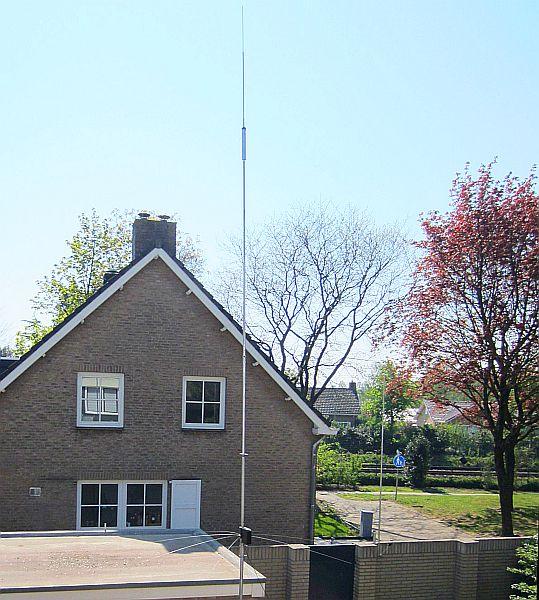
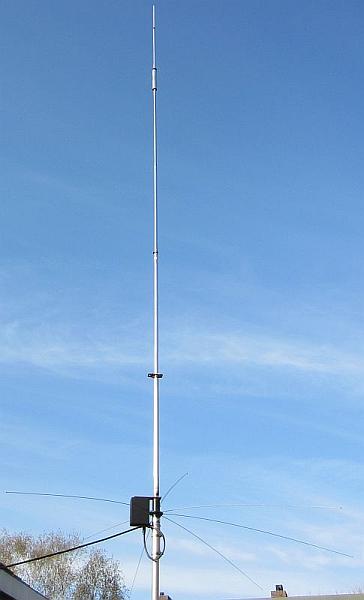
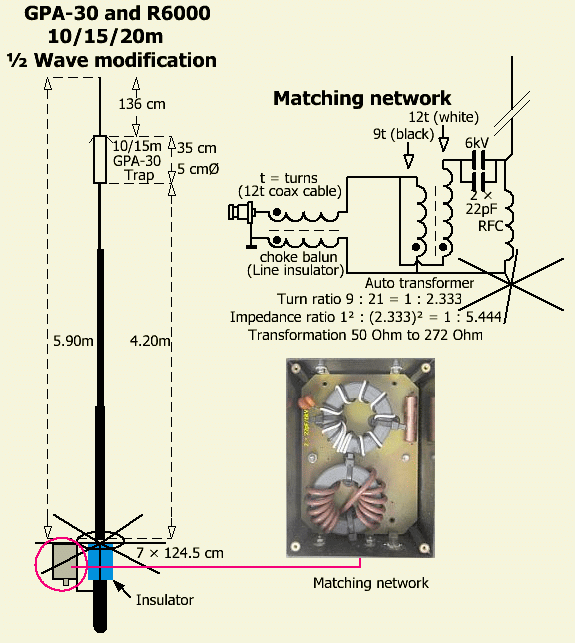
INTRODUCTION
Perhaps the following information is useful to DIY or to give your surplus antennas a destination.
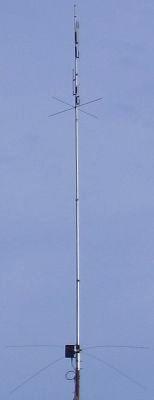
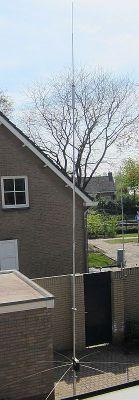
Because surplus second-hand Fritzel and Cushcraft antenna parts were lying around, "something" was done with it. The result is a ½ wave vertical antenna for 10, 15 and 20 m.
Because I do not use 12 and 17 m that often and to reduce the wind load, these bands have been dispensed with. They are doing reasonably well with my inverted V all band wire antenna.
The feedpoint of the 3-band antenna is not in the center, but more like a windom system: Off Center Feed (OCF).
The GPA-30 trap was used because water often seeps in with an R6000 trap and the construction is not as robust as that of Fritzel antennas. In addition, an R6000 has two separate traps for 12 and 17 m, while the 10 and 15 m traps of a GPA-30 are mounted in one housing.
Apparently the radiation is quite flat, because in the test set-up 1.50 m above the ground, the antenna (fig») works better in an easterly direction than my («fig) shorter R5 vertical on top of a 12 m mast. The R5 is better to the west. Here is more unobstructed view to the east.
The SWR on three bands is SWR<1.5.
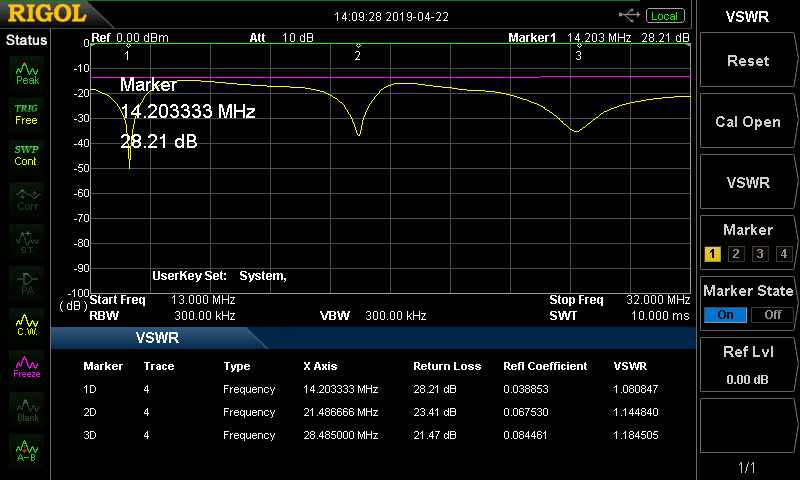

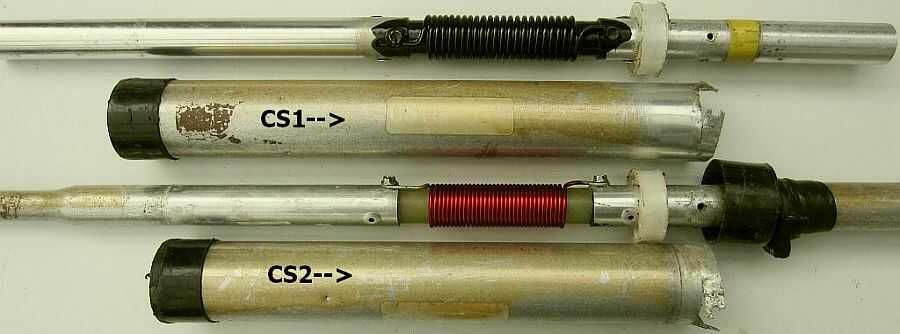

INSULATOR R6000
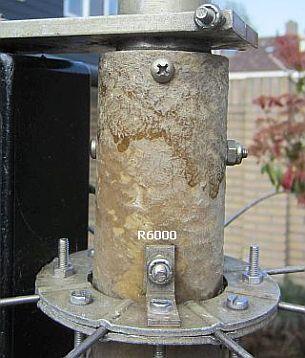
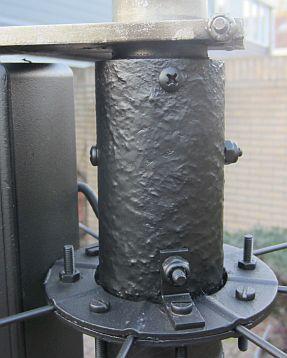
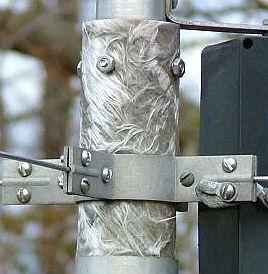
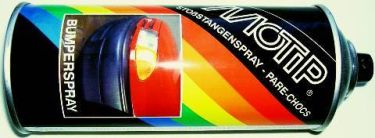
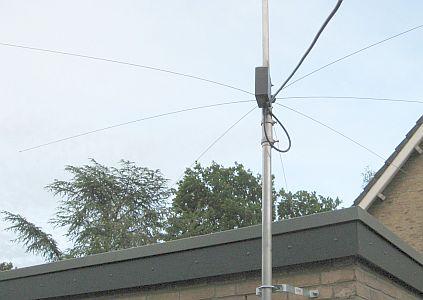
The antenna is off center fed with a matching network and is mounted next to an insulator of fiberglass and polyester resin. If the insulator has been exposed to our climate for some time, the resin "evaporates" on the surface. The fiberglass becomes visible, is unprotected, acts as a sponge and absorbs dirt and dust.
Good protection is a preventive layer (fig») of, for example, black Bumperlak. If the top layer has already been weathered (evaporated), apply with a brush a layer of two-component polyester resin before spraying with paint.
MATCHING NETWORK R6000
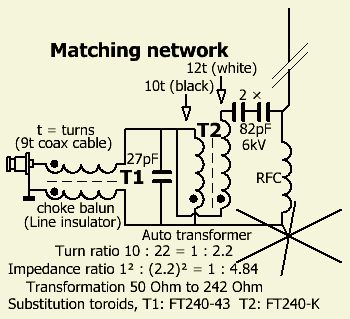

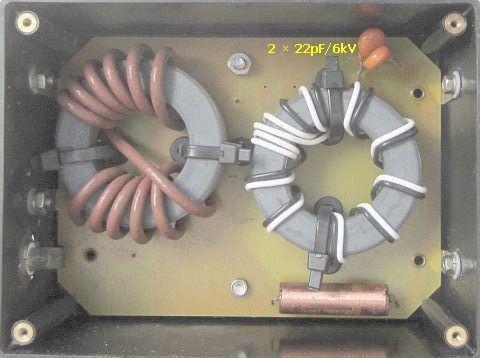 .
.
With these images it should be possible to DIY this matching network (use for example or replace with FT240-k, FT240-43 and FT340-43 ring cores/toroids).
The existing R6000 matching network was used for off-center feeding. This is composed of a choke balun (or line insulator) and an auto transformer. The last is mentioned as 1 ÷ 4 on various home pages. I don't know if the manufacturer has designed it as such, but as it is mounted on the print, it works as a auto transformer with a different ratio.
The white wire is wound 12 times through the core and the black wire 9 times. The input tap is on 9 turns of a coil with 21 turns. The transformation ratio then becomes 1 ÷ 5,444. So the 50 ohm input is transformed into 50 × 5,444 = 272 ohms. Very close to the 300 Ohm impedance of a Windom antenna such as the system used in Fritzel's FD3 and FD4 antennas.
With the above images it must be possible to DIY this matching network.
With an suitable antenna tuner and not too much power one can also work on the WARC bands is my experience.
TOP LOADING

Stainless steel strips dismantled from screen wipers.
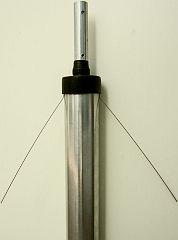
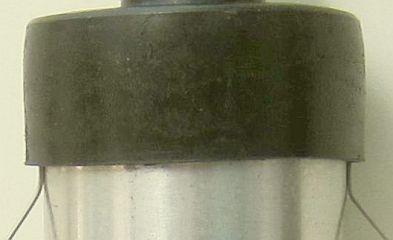
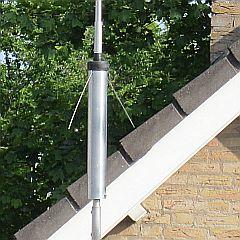
Capacitive top loading for 15 m.
Although SWR on the 15 m band was good, the resonance point was decreased with a capacitive top loading. I used thin stainless steel strips that were removed from screen wipers. If those need to be replaced, I always take them out because in practice there is always an application for them.
The strips are clamped under the plastic cover of the trap. No additional method is needed because they are so well anchored.
To prevent birds from sitting on them they are not mounted horizontally.
The top loading has a lesser influence on the 20 m band, but the shift to a lower frequency remains within the band.
At the input of an approximately 10 m long RG213 coaxial cable, the lowest SWR is:
| Analyzer RigExpert AA-230 ZOOM | ||
| Sunny weather. 14.160 MHz, SWR = 1.04 21.280 MHz, SWR = 1.06 28.240 MHz, SWR = 1.17 |
Heavy rain. |
After weeks. |
This result can not achieved with R6000 traps.
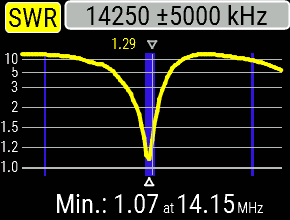
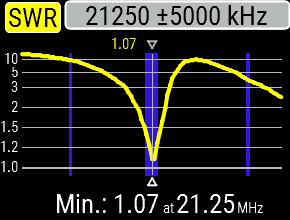
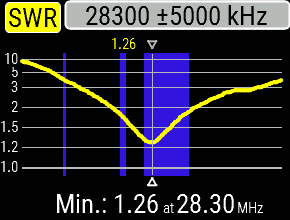
Rainy weather on Dec 30, 2021, 1900 GMT.
.gif)
.gif)
.gif)
Dry cloudy weather on Jan 10, 2022, 1630 GMT.
It can clearly be seen that rainwater on the antenna causes an increased capacitance compared to earth, so that the antenna becomes electrically longer and the frequencies shift downwards.
MAINTENANCE
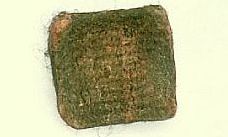

Clean and remove oxidation from all aluminum parts with a metal sponge impregnated with soap. Various publicists on the internet advise against the use of these sponges for traps, because according to them metal particles remain between or under the bobbin threads.
In the more than 45 years that I have worked and maintained with Fritzel traps, there was no sign of this. Perhaps it is a matter of good fat-free and then rinse with water. I currently use brake cleaner as a maintenance product.
In particular, the fixings from and to the coils and housing require extra attention. Carefully release it. Clean and remove oxidation residues for good contact before everything is put together again.
See also: Cushcraft R5